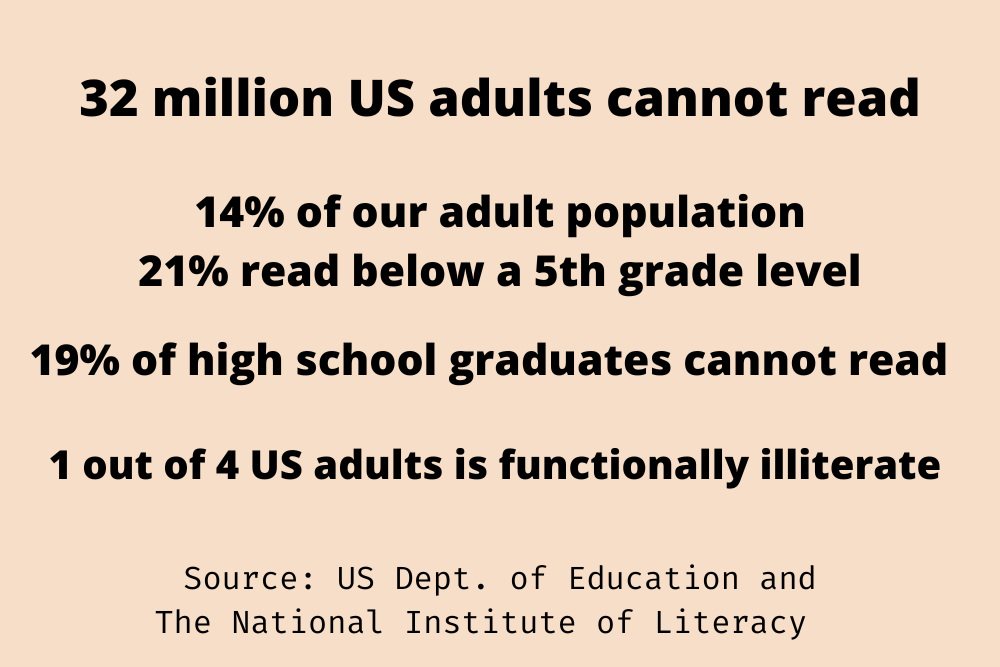
Doing some research the other day I reviewed some statistics on the literacy rate in the United States.
The national literacy test is given every ten years, with the last results from 2014.
These 2014 statistics are what I quote in my reading webinar.
Since the late 70’s I have been involved with adult and children’s literacy and the literacy rate over all these years has not budged.
The big question for me, which looms large since Rudolph Flesch wrote in 1955 his book, Why Johnny Can’t Read, becomes…
Why can Johnny still not read?
Since 1955 the problem is still the same. The solution is the same.
As Flesch wrote sixty-seven years ago, teaching reading with systematic phonics instruction is extremely effective.
In my experience, as was Flesch’s, of teaching hundreds of children and adults how to read using systematic phonics, the success rate was 100%.
So…Why can Johnny still not read?
Andrew Bernstein, a college professor, in his book, Why Johnny Still Can’t Read, Write or Understand Math and What We Can Do About It, lays out the history and structure of the impregnable fortress that is our educational system.
In the first part of the book, Bernstein gives us the evidence and the underlying philosophies that have led to the disaster that is our current American educational system.
Since about 1918 (yes, over 100 years) there has been an ongoing power play to keep the literacy rate low by the teaching of reading using the look-say method, sometimes also called whole-word or whole language reading method.
A prevailing thought in 1918 among the folks behind the Commission on the Reorganization of Secondary Education (CRSE) was that only 5% of the population needed high levels of literacy.
How times have changed. Today we need most of our population to be highly literate, instead of our current 12 percent.
We know that low literacy rates lead to various outcomes. Among these are:
- Higher unemployment rates
- Higher rate of illness, both physical and mental
- Higher poverty rate
- Higher divorce rates
- Higher incarceration rates
What can we do to fix it?
In the second part of the book, Bernstein offers actionable suggestions for parents, and all of us who care:
- Understand that parents should hold the final authority in education
- Insist that your children receive systematic phonics instruction
- Understand that you can teach your child to read (Bernstein tells us it is easy and I have to agree. It really is easy!)
Much more controversial is his suggestion to privatize government schools.
Again, Bernstein lays out evidence from around that world that supports what might seem at first glance an extremely radical idea.
But perhaps it is an idea whose time has come.
I invite you to read, share and discuss with friends and family the ideas in Why Johnny Still Can’t Read.
We need every person to be the best they can be, and it starts with reading, writing and understanding math.
It’s time to do what we know works.




This article from the AP about how Mississippi used systematic phonics instruction to make a huge difference in their fourth grade literacy rate.
https://apnews.com/article/reading-scores-phonics-mississippi-alabama-louisiana-5bdd5d6ff719b23faa37db2fb95d5004